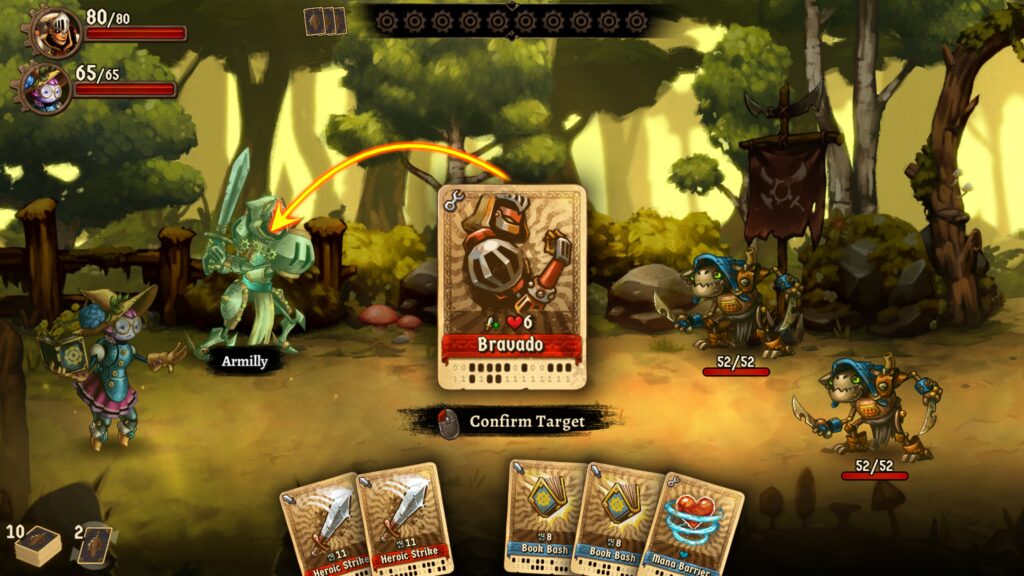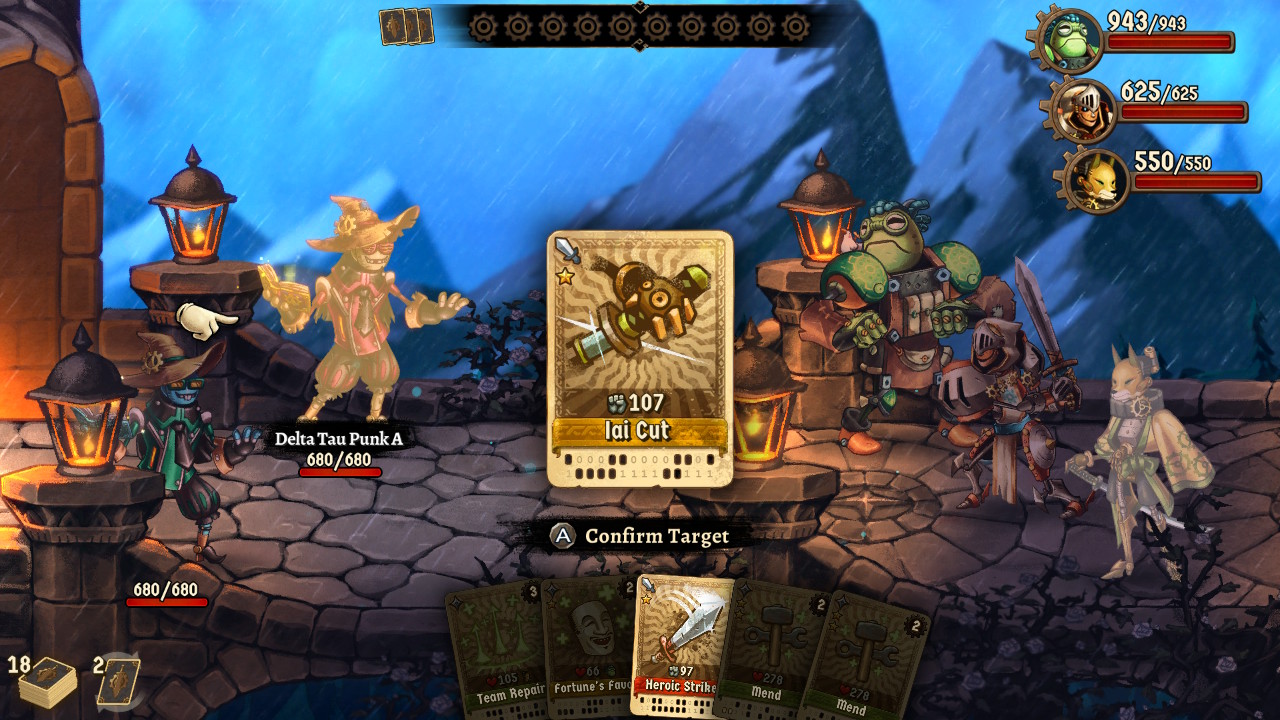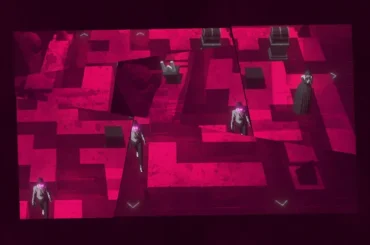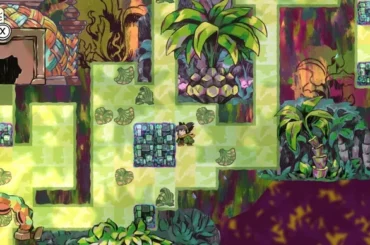Developer: Image & Form Games
Publisher: Thunderful
Release Date: May 31
Platforms: Windows, Mac, Linux
Available On: Steam
Price: £22.49 / $24.99 / €24.99
Image & Form Games has consistently delivered captivating titles throughout their twenty-year history, seamlessly transitioning between genres. With their latest card-based RPG, SteamWorld Quest: The Hand of Gilgamech, I anticipated a delightful experience. However, there was a moment when I began to question whether the SteamWorld magic had finally faded. Repeating the same cards against familiar foes left me feeling despondent—until I encountered the dynamic duo of Tarah and Thayne, who revitalized my enthusiasm.
Tarah and Thayne are outstanding characters. These purple, rabbit-eared siblings are the last of the five (or is it six?) heroes you’ll meet on this 15-20 hour journey, and they’re certainly worth the wait. For me, they encapsulate everything that makes SteamWorld Quest an engaging and rewarding card battler.

Each hero has their own deck of cards, akin to character decks in Slay the Spire, each with unique strengths and weaknesses. Main character Armilly is a powerful knight, while the wise Copernica wields fire and ice magic. Galleo, the hulking frog bot, serves as the main healer, and the foxy samurai Orik uses kabuki-style masks to switch between buffs and deliver formidable lightning attacks with his katana.
Tarah and Thayne, on the other hand, are crafty orphans with a penchant for giant axes and dark magic. Their deck can be tailored to emphasize either strength, allowing for a nuanced fighting style. They excel at draining the power of their enemies to bolster their own attacks, synergizing well with other party members to enhance overall damage. By the time I approached the game’s final boss, they had become the glue that held my team together.
SteamWorld Quest does not punish players harshly for defeat; if all your characters faint, you simply respawn at the nearest health-restoring statue, retaining all your experience, items, and money. This ‘try again’ philosophy encourages experimentation with the eight cards each character brings into battle.
In the latter half of the game, I often found myself exploring different attack combinations due to the sheer variety available. With only eight cards per character, finding the right balance of basic attacks and upgrades is essential for generating the ‘Steam Pressure’ (SP) necessary to activate powerful Skill cards. Since everyone shares the same SP pool, building a well-rounded team becomes crucial. Loading one character with high-cost cards isn’t effective without a supportive hero to help manage SP, fostering a dynamic interplay between characters.
For example, playing one of Armilly’s cards before unleashing Tarah and Thayne’s deadly Double Swing grants the twins a strength boost. Similarly, Galleo’s Super Soaker ability reduces an enemy’s ice and lightning defenses, allowing Orik to exploit their vulnerabilities in subsequent turns. This blend of powers and unpredictability is satisfying, particularly with the ability to redraw up to two cards per turn, adding to the excitement of forming effective combinations.
There’s nothing quite like unleashing three cards in a row to trigger a character’s special chain attack, which varies based on their equipped weapon. Armilly’s Lionheart ability, for instance, provides healing and an additional attack, while her new sword grants a weaker but strategically beneficial Bleed damage option. These mental gymnastics provide a rewarding experience as you decide when to deploy chain attacks versus combo moves.
Despite being Image & Form’s first foray into the genre, the combat system shines, particularly in the second half of the game when Tarah and Thayne join the fray. By then, you have a more extensive card pool and greater combo opportunities, and the enemies become more varied beyond the initial lineup of generic robo bees, hound guards, and beaked mages.
The first half of the game isn’t lacking; it introduces a steady learning curve, with new cards consistently acquired through crafting or treasure hunting. You’re only a few chapters away from meeting new heroes and discovering their mechanics. My initial doubts were brief, but they crept in during a stretch before Orik’s arrival, where I navigated visually similar hallways and faced repetitive enemies with a seemingly limited card set. Perhaps my reluctance to experiment contributed to the feeling of stagnation; when a successful formula is in play, it’s easy to resist change.
In those moments, I felt as though I had reached the limits of SteamWorld Quest. Unlike the dynamic environment of SteamWorld Heist, which featured procedurally generated ships and real-time aiming, Quest’s linear, turn-based combat can occasionally feel repetitive.
However, my concerns evaporated with the arrival of Tarah and Thayne, although the ongoing reliance on a narrow pool of enemy types remained a minor issue. There were also a few quirks that could be improved. While I appreciated the fast-forward feature during fights, I wished the skip button for cutscenes would allow players to skip entire dialogues instead of progressing line by line. This isn’t an issue on the first playthrough, but it can become tedious if you revisit chapters to collect missed treasure.
Additionally, the PC version’s keyboard and mouse controls could use some refinement. The Enter key is the default for interacting with objects, while the mouse serves as both a pointer and another interaction button. Unfortunately, if your cursor isn’t precisely over the desired target, you may inadvertently run in the wrong direction, resulting in awkward encounters. Customizing controls to bind left-click for interactions could alleviate this issue, although it adds to early pacing concerns.
SteamWorld Quest may not rival Slay the Spire, and dedicated fans of that game might find its single-player narrative somewhat limiting. Nevertheless, for card novices like myself, it remains a charming experience, even during its slower moments. Image & Form infuses so much heart into their games, and SteamWorld Quest is no exception. When everything clicks, this robo card battler becomes truly enchanting. The way each card interlocks makes you feel like a master strategist, revealing the inner workings of the game’s mechanics. While it may not quite reach the heights of SteamWorld Heist, it ultimately left me spellbound.




